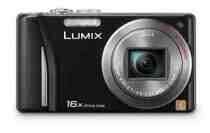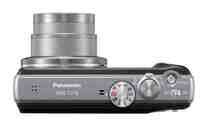Panasonic Lumix DMC-TZ18 review
Panasonic has an enviable track record for its TZ-series cameras, which squeeze big zooms into compact bodies, and it continues to set the pace with this sixth-generation model. It replaces the Panasonic Lumix TZ8 with a boost to all the key specs: the zoom is up from 12x to 16x, the screen from 2.7in to 3in and the image size from 12 to 14 megapixels.
This megapixel increase will sound alarm bells for regular readers, who are probably as tired of reading about the perils of 14-megapixel compact cameras as we are of writing about them. There’s a silver lining this time around, though. The TZ8 used a 14-megapixel sensor but cropped the edges of the frame to capture a 12-megapixel image – a technique that put less demands on the lens design. This time around, the sensor has the same 14-megapixel resolution but the lens focuses light across its entire surface, giving bigger photos without necessarily boosting noise. That’s good news but it’s hardly cause for celebration – this is still a 1/2.3in, 14-megapixel sensor. Just to be clear, all such sensors we’ve seen have been appallingly noisy.

The 16x zoom range is the main attraction, extending further than the TZ8 for both wide-angle and telephoto shooting. Impressively, it displayed even better corner focus than its predecessor, and remained sharp throughout the zoom range. Telephoto shots in low light were less successful, though. We’ve been seriously impressed by Panasonic’s Power OIS stabilisation system in the past, but while it generally performed well here, it appeared to struggle for telephoto shots at shutter speeds below 1/60s, even when using a tripod. We achieved better results with the tripod after switching stabilisation off. Still, while this made indoor telephoto handheld photography impractical, that’s a fairly niche use that we can live without.
The 16x zoom range is the biggest we’ve seen from a compact-shaped camera, so it’s disappointing that Panasonic feels the need to boast about a 20x zoom. This comes via the help of its Intelligent Resolution technology, but from our point of view it’s just plain old digital zoom. Comparing 16x zoom and 20x zoom shots, the latter were more magnified but no more detailed, and exhibited blocky artefacts around high-contrast lines. Shooting without Intelligent Resolution and applying a 25% enlargement in Photoshop Elements gave much better results.

The controls are straightforward and effective, with the full complement of automatic and manual exposure modes on a top-mounted dial (see above). The menus have been given a cosmetic overhaul, and while they’re not as handsome as before, we appreciate the text descriptions that appear for each option. Some could be more illuminating though: for ISO Sensitivity, the words “Set sensitivity level” don’t help much. Performance is faster than on the TZ8, taking just 1.3 seconds between shots, or 5.7 seconds with the flash at full power. The continuous mode is slower, though, running at 1.1fps and lasting for just three shots.